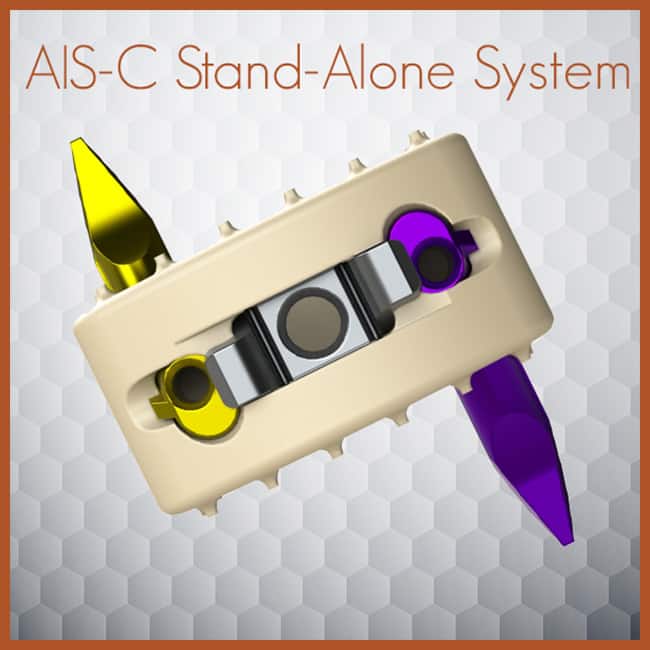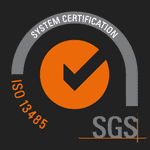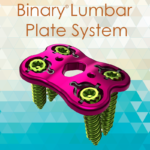Genesys Spine is excited to announce the 510(k) clearance of our newest product line, the AIS-C Stand-Alone System. A first-of-its-kind, non-screw based, zero-profile, direct-anterior stand-alone interbody system for the cervical spine, designed to provide the greatest ease of use to the surgeon at every step of the procedure.
We recently sat down with our two key engineers on this project; J. Landon Gilkey, Senior Principal Design Engineer, and Benjamin Keller, Product Development Engineer who’ve worked tirelessly on this project. We couldn’t wait to pick their brains regarding their inspiration, goals, design process, and more. Please enjoy a peek into our amazing team that brought the AIS-C Stand-Alone from idea to reality.
Genesys Spine (GS): Why was the AIS-C Stand-Alone System designed and developed?
Ben Keller (BK): Our design surgeons stressed three critical criteria during the commencement of this project:
- Direct anterior access
- Locking mechanism to prevent Anchor migration
- Must have the ability to be revised easily
Surprisingly there was no other system on the market that satisfied all three of these requirements. Not only have we created a system that meets those needs, we have created a system that does so in an efficient and elegant way.
GS: What was the one element that was most influential to your design?
Landon Gilkey (LG): The most significant aspect of the AIS-C design is its simplicity to implant. From a surgeon’s perspective, there’s only one extra step compared to a standard cervical fusion. Once everything is loaded, they simply squeeze the trigger of the inserter and detach from the implant.
GS: What are the advantages offered over current Non-Screw Stand-Alone Systems?
BK: I believe the AIS-C Stand-Alone System has several advantages over the current Non-Screw Systems…
- Can be easily revised. Additionally, the AIS-C system has the option to replace the Anchors without replacing the interbody. This may be helpful if the surgeon decides an Anchor is too short and wants to insert a longer Anchor.
- Locking mechanism provides visual confirmation of fully deployed Anchors.
- Less invasive to the vertebral bodies.
- Primary inserter does not require impaction; our pistol-grip inserter just needs to be squeezed to deploy the Anchors into the vertebral bodies. However, we do offer an impaction inserter for those surgeons who prefer that insertion method.
GS: What are the advantages offered over current Screw-based Stand-Alone Systems?
BK: I believe the AIS-C Stand-Alone System has several advantages over the current Screw Systems…
- Much smaller exposure needed to insert the Anchors.
- Reduced operative time – screw-based systems have 2 or more screws which have to be individually driven into the vertebral bodies. They also often require an awl or drilled pilot hole prior to screw insertion. Our Anchors can both be inserted within a few seconds and require no pilot holes.
GS: What was your design goal for the AIS-C Stand-Alone System?
LG: The ultimate design goal was to add as few steps as possible to a standard cervical fusion. To realize that goal, we needed the inserter to do the bulk of the work. The result was a double cam action pistol grip inserter that retains and aligns the Anchors with the implant while also providing enough mechanical advantage to push the Anchors into bone by squeezing a trigger.
GS: What was your favorite stage in the design process?
BK: The cadaveric labs when we tested the system were most fulfilling. In early 2016 – Genesys Spine opened our bio-skills lab. This has been a great boon for both doctors and engineers. We have learned many things through these labs but most importantly it helps us appreciate the work that we do.
For more information on the AIS-C Stand-Alone System, or any of Genesys Spine’s products, please visit www.genesysspine.com.





